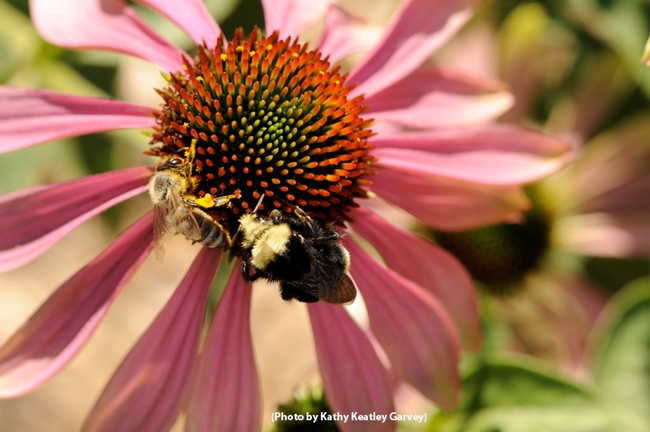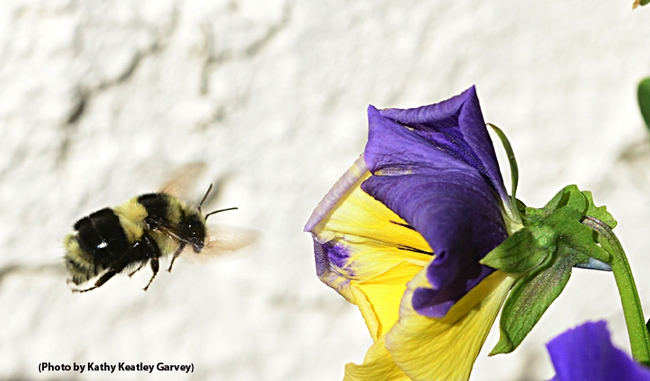Who knew?
UC Riverside entomologist Peter Graystock and colleagues Dave Goulson and William O. H. Hughes of the University of Sussex, United Kingdom, just published first-of-its-kind research in the Proceedings of the Royal Society B, that clearly shows the interaction of parasites between flowers and bees.
"Despite their beauty, flowers can pose a grave danger to bees by providing a platform of parasites to visiting bees, a team of researchers has determined," wrote UC Riverside senior public information officer Iqbal Pittalwala.
Graystock, a postdoctoral researcher in the UC Riverside Department of Entomology and lead author of the paper, was quoted in the news release: “Flowers are hotspots for parasite spread between and within pollinator populations. By showing that visits from parasite-carrying bees can turn flowers into parasite platforms, we can say that it is likely that heavily visited flowers may become more ‘dirty' with bee parasites. Planting more flowers would provide bees with more options, and parasite spread may thus be reduced.”
The researchers found four common honey bee and bumble bee parasites dispersed via flowers: Nosema apis (causes a honey bee disease), Nosema ceranae (causes an emergent disease in honey bees and bumble bees), Crithidia bombi (causes a bumble bee disease) and Apicystis bombi (mostly found in bumble bees). "These parasites are known to cause, lethargy, dysentery, colony collapse, and queen death in heavily infected bees," wrote Pittalwala.
The research, titled "Parasites in Bloom: Flowers Aid Dispersal and Transmission of Pollinator Parasites within and between Bee Species," was published Aug. 4 in the prestigious journal.
The abstract:
"The dispersal of parasites is critical for epidemiology, and the interspecific vectoring of parasites when species share resources may play an underappreciated role in parasite dispersal. One of the best examples of such a situation is the shared use of flowers by pollinators, but the importance of flowers and interspecific vectoring in the dispersal of pollinator parasites is poorly understood and frequently overlooked. Here, we use an experimental approach to show that during even short foraging periods of 3 hours, three bumblebee parasites and two honeybee parasites were dispersed effectively onto flowers by their hosts, and then vectored readily between flowers by non-host pollinator species. The results suggest that flowers are likely to be hotspots for the transmission of pollinator parasites and that considering potential vector, as well as host, species will be of general importance for understanding the distribution and transmission of parasites in the environment and between pollinators."
As Graystock pointed out in the news release: "With some 20,000 bee species, it is a surprise that only recently has research in pollinator health considered the interactions between bee species. Our finding may also affect the national and international trade of flowers unless sterilization of parasites on these flowers can be guaranteed. Otherwise, flower movements may also be moving pollinator parasites to new territories.”
We're looking forward to more of this research.
Attached Images:

A honey bee foraging on a pansy. (Photo by Kathy Keatley Garvey)

A yellow-faced bumble bee, Bombus vosnesenskii, and a honey bee, Apis mellifera, share a purple coneflower. (Photo by Kathy Keatley Garvey)

A black-tailed bumble bee, Bombus melanopygus, heads toward a pansy blossom. (Photo by Kathy Keatley Garvey)